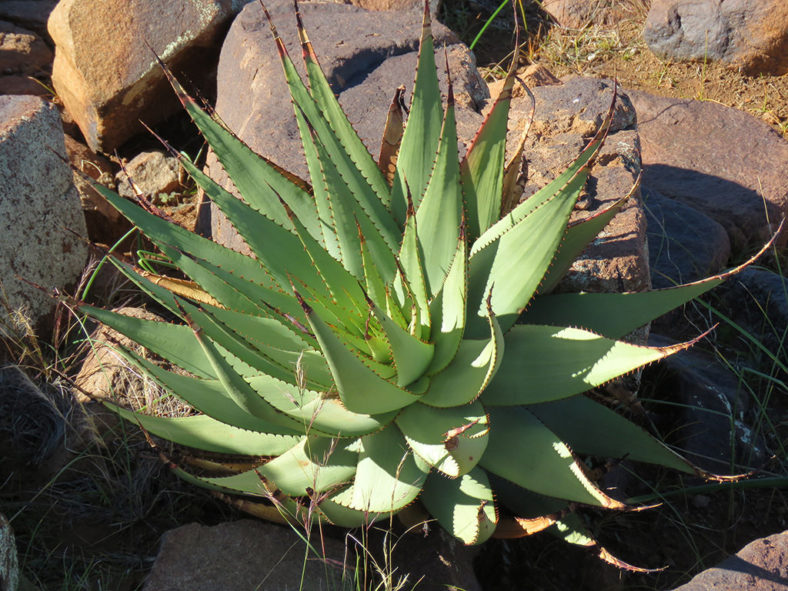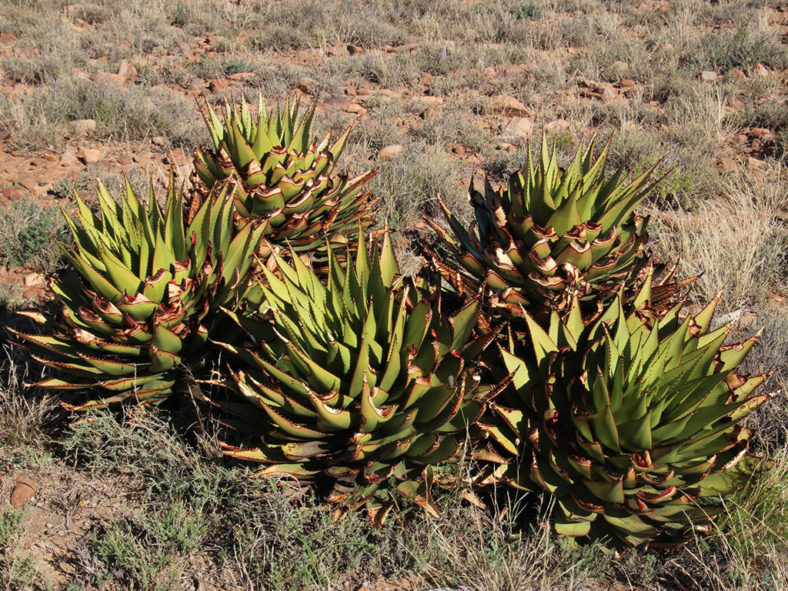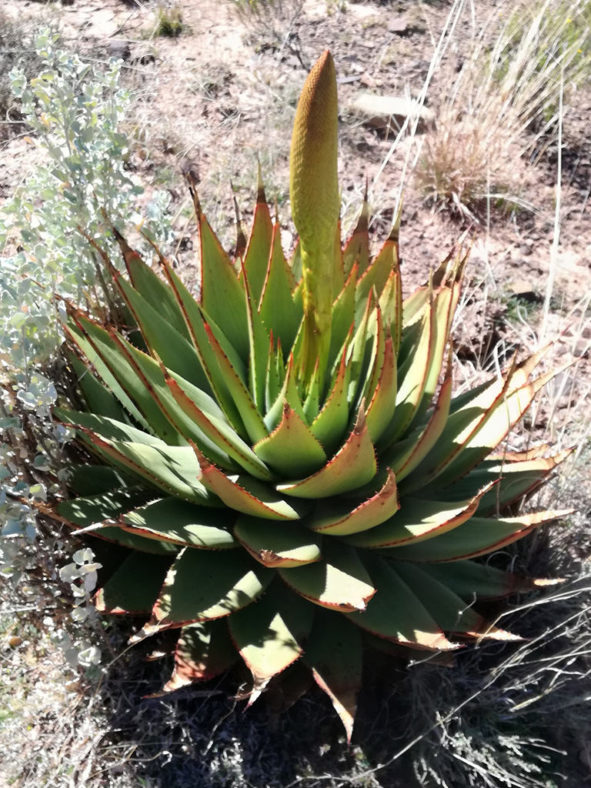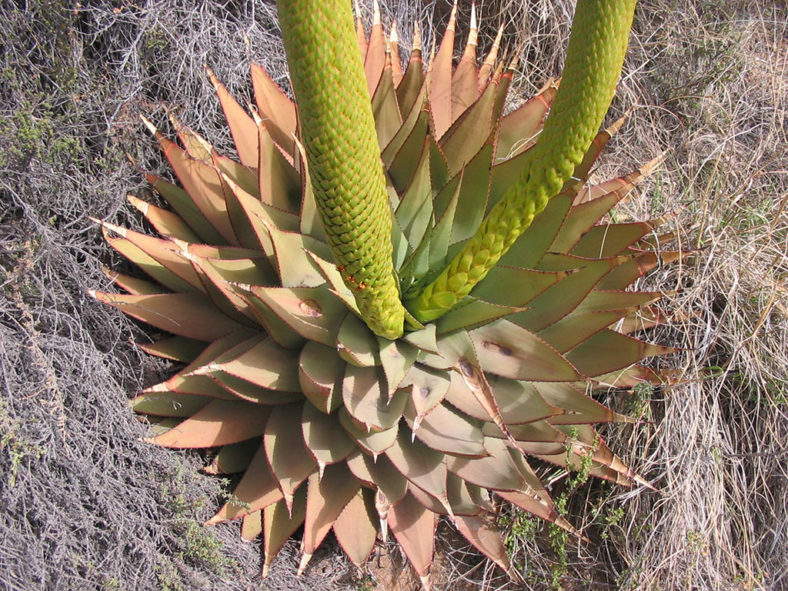Scientific Name
Aloe broomii Schönland
Common Name(s)
Mountain Aloe, Snake Aloe
Synonym(s)
Aloe broomii var. broomii
Scientific Classification
Family: Asphodelaceae
Subfamily: Asphodeloideae
Genus: Aloe
Etymology
The specific epithet "broomii" (pronounced "BROOM-ee-eye") honors Robert Broom (1866-1951), a British-South African doctor and paleontologist, who collected this species in 1905 at Pampoenpoort, between Carnarvon and Victoria West, in the Northern Cape province of South Africa.
Origin
Aloe broomii is native to South Africa and Lesotho. It grows on rocky slopes in hilly and mountainous areas at elevations between 3,280 and 6,560 feet (1,000 and 2,000 m).
Description
Aloe broomii is a succulent plant that forms a short-stemmed rosette of thick, fleshy, light green leaves with sharp, brown teeth along the margins. It can grow up to 3.3 feet (1 m) tall, usually solitary, although it may split into groups with 3 to 5 rosettes. The leaves are lance-shaped, with the upper third usually dry and brownish, and can measure 12 inches (30 cm) in length and 4 inches (10 cm) in width.
The most notable feature of Aloe broomii is its odd inflorescence, on which the buds and flowers are hidden by the extended bracts, giving it a snake-like appearance, hence its common name. The inflorescences are densely flowered racemes, usually simple, and can grow up to 4 feet (1.2 m) tall. The flowers are pale greenish-yellow and bloom in spring, reaching a length of 1 inch (2.5 cm). They open in a ring, approximately 4 inches (10 cm) long, from the bottom of the inflorescence upwards at a time, but all that can be seen are the stamens and stigmas sticking out beyond the bracts.

How to Grow and Care for Aloe broomii
Light: When growing A. broomii indoors, place your plant near a window with plenty of bright indirect sunlight. Rotate the pot once or twice a week so that all sides of the plant receive equal lighting. Outdoors provide light shade, especially during the hottest parts of the day.
Soil: Plant A. broomii in a well-drained soil mix formulated for succulents or make your own. Drainage is essential because too much moisture around roots can cause root rot.
Temperature: This succulent grows best between 50°F and 85°F (10°C to 30°C). When temperatures shift below 50°F (10°C), it is time to bring your plant back inside. A. broomii can withstand temperatures as low as 25°F (-3.9°C). USDA Plant Hardiness Zones 9b to 11b, 25°F to 50°F (-3.9°C to 10°C).
Watering: This succulent needs regular watering but is very tolerant of short periods of drought. Water deeply but only when the soil is dry. Cut back on watering during the winter months. Do not let water stand in the rosettes.
Fertilizing: A. broomii generally does not require fertilizer, but may benefit from the extra nutrients. Feed with a fertilizer for succulents in spring and summer only. Be sure to follow the label directions.
Repotting: This plant is not particularly fast-growing and will only rarely need repotting. To prevent rootboundness, repot it in the spring in a container a few inches larger in diameter every few years.
Propagation: Since a species with a usually solitary growth habit, A. broomii can be propagated only from seeds. For best results, sow seeds during the warm months.
Learn more at How to Grow and Care for Aloe.
Toxicity of Aloe broomii
A. broomii is not listed as toxic for people and pets.
Links
- Back to genus Aloe
- Succupedia: Browse succulents by Scientific Name, Common Name, Genus, Family, USDA Hardiness Zone, Origin, or cacti by Genus
Photo Gallery
Click on a photo to see a larger version.


